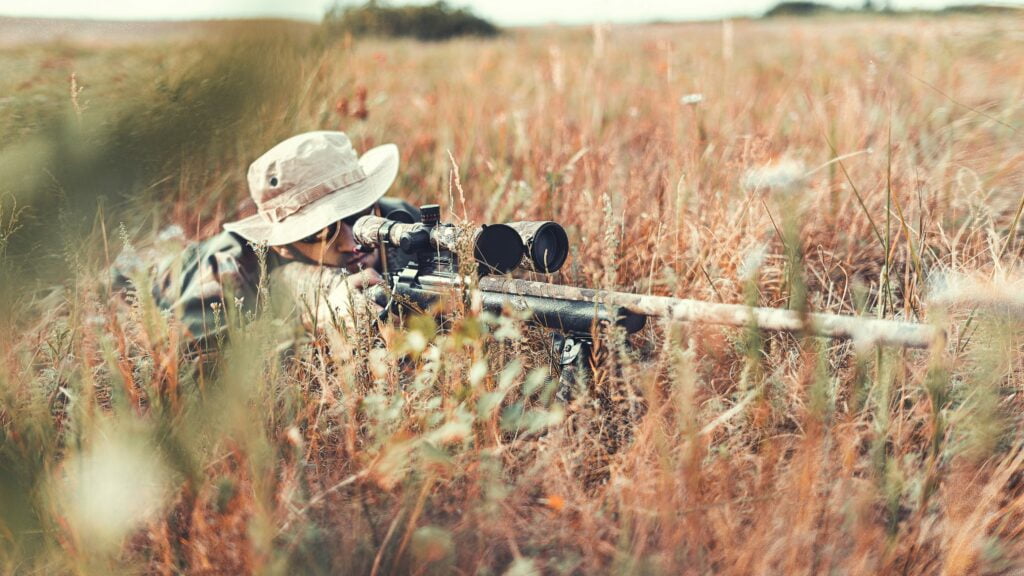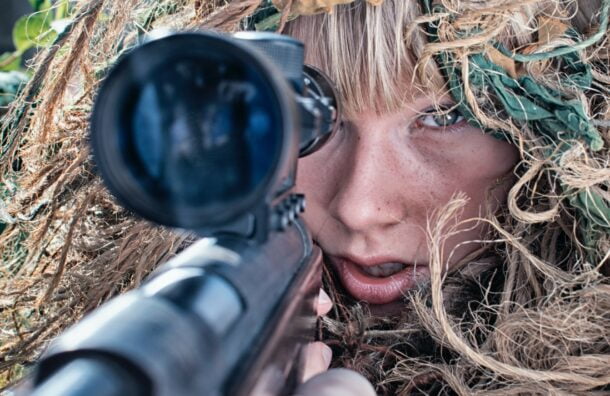When it comes to shooting sports or hunting, having the right rifle scope can make all the difference in hitting your target accurately and with precision. Optic scopes are designed to enhance your shooting experience by providing a magnified view of your target, making it easier to aim and shoot. However, with so many options available in the market, selecting the perfect rifle scope can be a daunting task. That’s why it is essential to have an optic scope selection guide to help you navigate through the various factors and make an informed decision.
Magnification, Objective Lens Size, and Reticle Type

One of the first factors to consider when selecting a rifle scope is the magnification. Magnification refers to how much the scope enlarges the target. It is denoted by a number followed by an “x”, such as 4x or 6x. The choice of magnification depends on the shooting application. If you are engaging in long-range shooting, a higher magnification scope, such as 10x or 12x, would be suitable. On the other hand, for close-range shooting or fast-moving targets, a lower magnification scope, such as 1x or 2x, would be more appropriate.
Another crucial factor to consider is the objective lens size. The objective lens size determines how much light the scope can gather. A larger objective lens allows more light to enter the scope, resulting in a brighter image, especially in low-light conditions. However, a larger objective lens also means a bulkier and heavier scope. Therefore, it is essential to strike a balance between light-gathering capability and the overall weight of the scope, depending on your shooting preferences and intended usage.
The reticle type is another factor that needs careful consideration. The reticle, or crosshair, is what you see when looking through the scope. There are various types of reticles available, including duplex, mildot, BDC (bullet drop compensator), and illuminated reticles. The choice of reticle depends on personal preference and shooting requirements. A duplex reticle, with its simple crosshair design, is popular for general-purpose shooting. Mildot reticles are commonly used for long-range shooting, as they enable range estimation. BDC reticles are designed to compensate for bullet drop at specific distances. Illuminated reticles are suitable for low-light conditions, as they provide a bright aiming point.
Explanation of Scope Parameters
To understand optic scopes better, it is essential to familiarize yourself with the various parameters used to describe their specifications. One of the main parameters is the field of view (FOV), which refers to the width of the area visible through the scope at a specific distance. A wider FOV allows for better situational awareness and is beneficial when tracking moving targets. However, a wider FOV often comes at the expense of higher magnification.
Another important parameter is the exit pupil. The exit pupil is the size of the beam of light that enters your eye through the scope. It is calculated by dividing the objective lens size by the magnification. A larger exit pupil results in a brighter image, especially in low-light conditions. To determine the ideal exit pupil for your shooting needs, consider the average size of your eye’s pupil, which ranges from 2mm to 7mm depending on lighting conditions.
Parallax is another parameter that affects the clarity of the image. Parallax occurs when the target appears to move in relation to the reticle when you move your eye behind the scope. This can cause the point of impact to shift, leading to inaccuracies. To minimize parallax, many modern scopes feature an adjustable parallax knob or turret.
Performance Evaluation: Clarity, Light Transmission, and Eye Relief
When evaluating the performance of a rifle scope, three key factors come into play: clarity, light transmission, and eye relief. Clarity refers to the sharpness and quality of the image seen through the scope. A high-quality scope will provide a clear and distortion-free image, allowing for better shot placement. Look for scopes that use high-quality glass and have multi-coated lenses to maximize clarity.
Light transmission is crucial, especially in low-light conditions. The ability of a scope to gather and transmit light can greatly affect your shooting accuracy. Scopes with larger objective lenses and high-quality glass often excel in light transmission. Look for scopes with fully multi-coated lenses, as they reduce internal reflections and minimize light loss.
Eye relief is the distance at which you can hold your eye from the scope while still maintaining a full view of the image. This is particularly important for shooters who wear glasses or have limited eye movement. A scope with generous eye relief will provide a comfortable shooting experience and reduce the risk of scope bite, which occurs when the recoil of the rifle causes the scope to hit your brow or eye.
Special Considerations: Adjustability, Durability, and Weather Resistance
When selecting a rifle scope, it is essential to consider its adjustability, durability, and weather resistance. Adjustability refers to the ability to make adjustments to the scope to align the point of impact with the point of aim. Look for scopes with precise and repeatable adjustment turrets for windage and elevation. Additionally, consider the type of adjustment system, such as MOA (Minute of Angle) or MIL (Milliradian), depending on your familiarity and preference.
Durability is crucial, especially if you plan to use your rifle scope in harsh or rugged environments. Look for scopes that are constructed from high-quality materials, such as aircraft-grade aluminum or magnesium alloy, which provide strength and durability without adding excessive weight. Additionally, consider scopes with shockproof and waterproof capabilities to ensure they can withstand recoil and adverse weather conditions.
Weather resistance is essential, as shooting often takes place in various weather conditions. Look for scopes that are fog-proof, as they are filled with nitrogen or argon gas to prevent internal fogging. Scopes with sealed and o-ring sealed construction are also essential to keep out moisture and dust, ensuring optimal performance in any weather.
Expert Recommendations: Top Optic Scopes for Different Shooting Applications
When it comes to choosing the perfect rifle scope, expert recommendations can be invaluable. Here are some top optic scopes, recommended by experts, for different shooting applications:
- Long-Range Shooting: Vortex Viper PST Gen II 5-25×50 FFP – This scope offers a high magnification range, an illuminated reticle, and excellent durability, making it ideal for long-range precision shooting.
- Hunting in Low-Light Conditions: Leupold VX-5HD 3-15×44 – With its Twilight Max HD Light Management System and exceptional low-light performance, this scope ensures clear and bright images, even in challenging lighting conditions.
- Tactical Shooting: Nightforce ATACR 5-25×56 F1 – Designed for military and law enforcement applications, this scope offers excellent clarity, a wide magnification range, and rugged durability to withstand harsh environments.
- Competitive Shooting: Schmidt & Bender PMII 5-25×56 – Known for its exceptional optical quality and precision, this scope is a favorite among competitive shooters, providing a clear and sharp image at all magnification levels.
Selecting the perfect rifle scope requires careful consideration of various factors and parameters. Magnification, objective lens size, and reticle type play a significant role in determining the suitability of a scope for your shooting application. Moreover, performance evaluation factors such as clarity, light transmission, and eye relief should not be overlooked. Special considerations, including adjustability, durability, and weather resistance, are also important to ensure a reliable and long-lasting scope. By taking into account these factors and considering expert recommendations, you can make an informed decision and find the perfect rifle scope to enhance your shooting experience.

